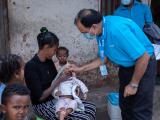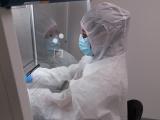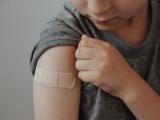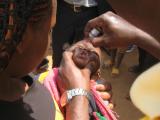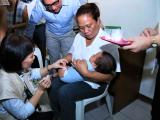Jan 30, 2013
Using reduced dose of inactivated polio vaccine looks promising in infants
Vaccinating infants with a reduced dose of inactivated polio vaccine (IPV) induces a priming response and seroconversion, suggesting that this approach could play a role in preventing a return of polio after its global elimination, according to a report today in the New England Journal of Medicine. The article notes that the World Health Organization has a goal of phasing out oral polio vaccines (OPVs) after eradication of wild polioviruses, since OPVs use live attenuated viruses that in rare cases can turn virulent and spread. Posteradication plans include using IPVs, which are injected and cost much more than OPVs. One strategy for lowering the cost of IPV in developing countries is to reduce the size and number of doses. The authors conducted a trial in which 320 Cuban infants were randomly assigned to receive a fractional intradermal dose or a full intramuscular dose of IPV at the ages of 4 and 8
months. After the first dose, seroconversion rates for all three poliovirus types were significantly lower in the fractional-dose group than in the full-dose group. A priming response was defined as the absence of seroconversion after the first dose and a fourfold increase in antibody titer between the time of the second dose and 1 week later. After the second dose, cumulative two-dose seroconversion for virus types 1, 2, and 3 occurred in 93.6%, 98.1%, and 93.0% of the fractional dose recipients, versus 100%, 100%, and 99.4% in the full-dose group. The authors say the findings show that using a single fractional dose of IPV is a "feasible, lower-cost alternative to schedules in which multiple full doses are used."
Jan 31 N Engl J Med report
Study finds 'cocooning' strategy inefficient where pertussis levels are low
"Cocooning" vaccination strategies—in which parents are vaccinated to protect their infants—are inefficient for reducing infant pertussis hospitalizations in areas where the overall incidence of the disease is low, according to new findings from Italian researchers. They estimated the costs and benefits of the strategy in the Piemonte, Italy, region, where incidence dropped to a low of .85 cases per 100,000 population in 2010. Researchers assessed the number needed to vaccinate (NNV) to prevent hospital admission in infants during the most recent epidemic cycle from 2005 to 2010. They found that the NNV was 5,000 to prevent one infant hospitalization. They wrote that their data confirm recent findings from two Canadian provinces that had low pertussis rates in 2010. Cocooning vaccination programs should take into account the epidemiologic pattern of the disease in the region where officials are considering the
strategy, they wrote. For example, in the United States, which is experiencing a spike in cases, the national incidence is much higher, at 11.6 per 100,000 persons, according to late November numbers from the Centers for Disease Control and Prevention (CDC) that indicate pertussis cases at their highest since 1955. Infants are at greatest risk for getting pertussis, but they can't get their first dose until they are 2 months old. Health officials recommend protecting babies by vaccinating pregnant women, preferably in their third trimester, and vaccinating infants' household contacts.
Jan 29 Vaccine abstract
CDC pertussis vaccine outbreak page
